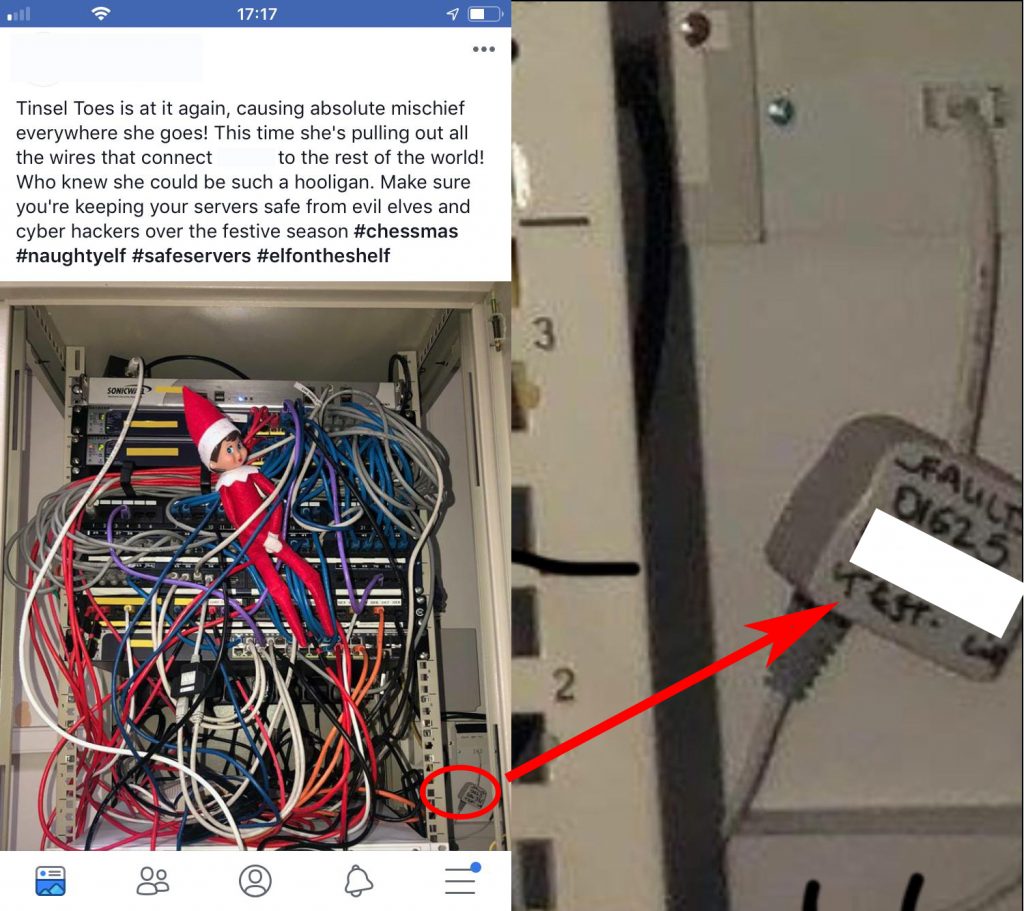This blog post is by no means a comprehensive guide from an expert in the cyber security area. However my previous role meant I had the pleasure of reviewing a number of customer penetration tests and from this, pretty much all of them were all exploited in the same way. So I put together some basic information for any of my customers to review and think about before they had a penetration booked.
After all, might as well make it a challenge for the people you are hiring to hack your network 😉
Methodology
Ok, so I’m only going to cover the basics, as there are far better articles out there on this.
- Reconnaissance
- Information gathering before attending the targets site
- IP addresses of websites and MX record details
- Details of email addresses (shared mailboxes, employees direct)
- Social networks (details shared on LinkedIn by Employees, the companies twitter posts etc)
- Consider the below twitter post by a company, what information can you glean from seeing a picture of their racks and other equipment.
- If we know the company name, we can enumerate the various domain names they own to public IP addresses, and just plug that into a website like http://shodan.io and maybe look for that Sonicwall and find out if its running the latest firmware.
- Below when zooming in on the image, we can find details of an ADSL line

- Job websites; are they hiring, especially in IT, what skills do they want? Looking for an engineer that knows a particular accountancy package?
- Information gathering before attending the targets site
- Enumeration/Identification
- Assessment of devices found and the search for vulnerabilities
- Tools in use such as, but not limited to; nmap, Nessus, Metasploit, unicornscan, nikto, dotdotpwn, gobuster.
- Assessment of devices found and the search for vulnerabilities
- Exploitation
- Create a plan of action/attack based on the information gathered.
- Perform the attack/exploitation itself to achieve the end goal, usually access to systems from zero, escalation with the end goal being access to private/sensitive/restricted systems and data.
- Tools in use such as, but not limited to; Kali Linux (OS and contains a lot of tooling), Nmap, Metasploit, BurpSuite, SQLMap, padbuster, custom exploit scripts
Common exploits to gain access
Ok so first, lets review how multiple networks were exploited or hacked.
Below is the common summary of issues found at many sites I reviewed, and this is what I will cover in this blog post ;
- Null session authentication on Domain Controllers
- Devices configured to use NBT-NS / LLMNR
- SMB Signing
- NTLMv1 in use for network authentication
- Domain Users have Local Admin permissions to their machines
- Poor password policy
- No split accounts for Domain Admins
- Poor patching on systems
Null Session Authentication
By default null sessions (unauthenticated) are enabled on Windows 2000 & 2003 servers. Therefore anyone can use these NULL connections to enumerate potentially sensitive information from the servers, read this as information from your Active Directory.
Therefore anyone with a legacy domain which has been upgraded through the years, will find that Null Session Authentication is enabled on their environments.
Seeing it in action Continue reading Notes from the field – Penetration tests
